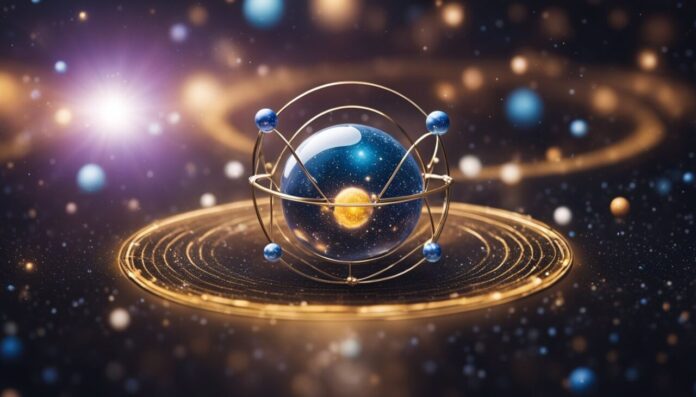
The universe is enormous. And there are so many mysteries out there. We actually don’t have any clue about 99% percent of what is happening out there.
We can see some of the biggest celestial bodies out there and we can also see some of the smallest particles.
Yet the question remains – what is really the smallest thing or the smallest particle in the world?
To answer this question, we need to delve into the depths of the subatomic world, where particles are so tiny that they can barely be detected by any kind of instrument or magnifier.
And so, in this article, we will explore the amazing world of the smallest things in the universe and the cutting-edge research that is being done to understand them.
That is, of course, only based on our current understanding. Namely, a hundred years ago scientists had a completely different view of what is the smallest thing.
Then people 200 years ago had also completely different concepts of the universe and small particles.
And if we go 1000 years back in history then we could all agree that our view of the world was entirely different.
Heck, we didn’t even have big clues about our own planet not to mention anything about small particles that can not be seen with the naked eye.
So therefore, now that we as humanity acquired a lot of information about everything, let’s see what we really know about the smallest particles or smallest things out there.
What Are We Defining as „Small“ in the Universe?
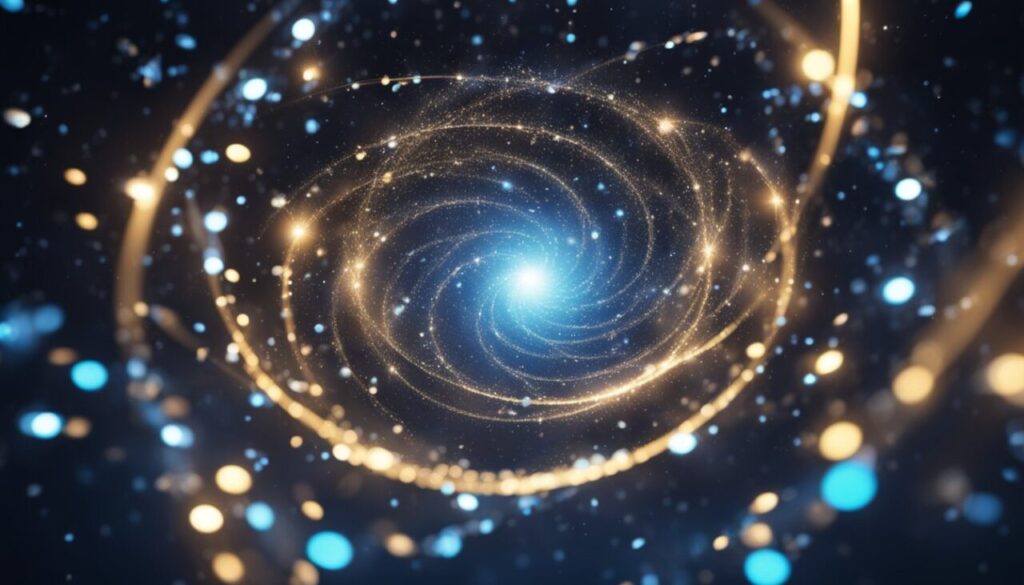
Concepts of Scale
When discussing the smallest things in the universe, it is important to define what is meant by “small.”
In physics, smallness is measured in terms of scale. Scale refers to the size of an object relative to other objects in the universe.
The universe is huge, and objects within it vary in size from the smallest subatomic particles to the largest known structures such as galaxy clusters.
To put things in perspective, consider the scale of a hydrogen atom, which is one of the smallest particles in the universe.
The size of a hydrogen atom is about 0.1 nanometers, which is one billionth of a meter. To put this in context, a human hair is about 100,000 nanometers in diameter.
That’s astonishing.
Physical Limits of Smallness
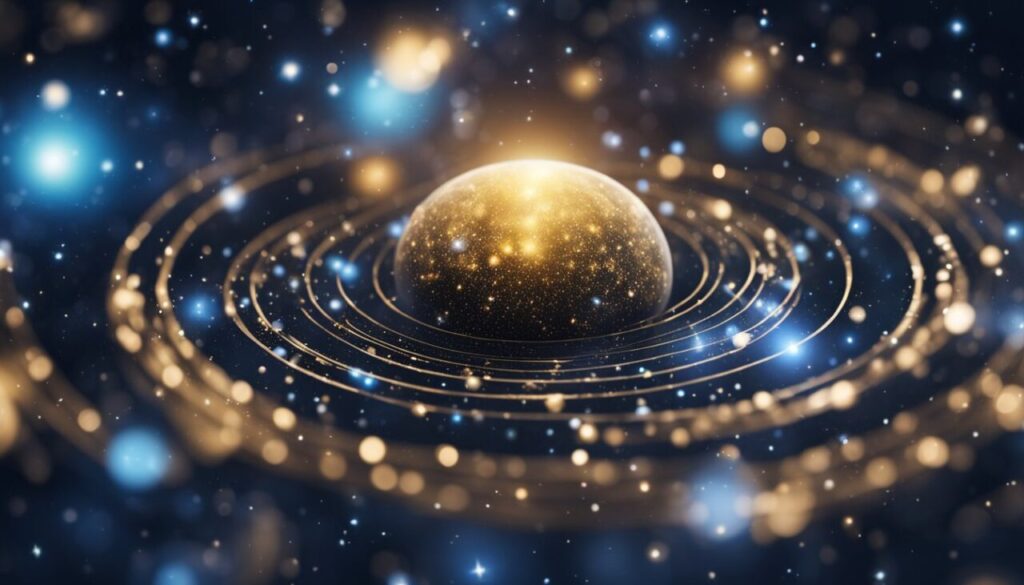
There are limits to how small objects in the universe can be. That’s what we think at least as per our current knowledge.
These limits are defined by the current laws of physics and the properties of matter. One of the most important limits is the Planck length, which is the smallest possible length that can exist in the universe.
The Planck length is unbelievably small, measuring at about 1.6 x 10^-35 meters. This is so small that it is difficult to comprehend.
It is believed that anything smaller than the Planck length does not exist, and the laws of physics as we know them break down at this scale.
Interesting fact: The Planck length is named after Max Planck, a German physicist who is considered the founder of quantum theory.
So What Is the Smallest Thing in The World?
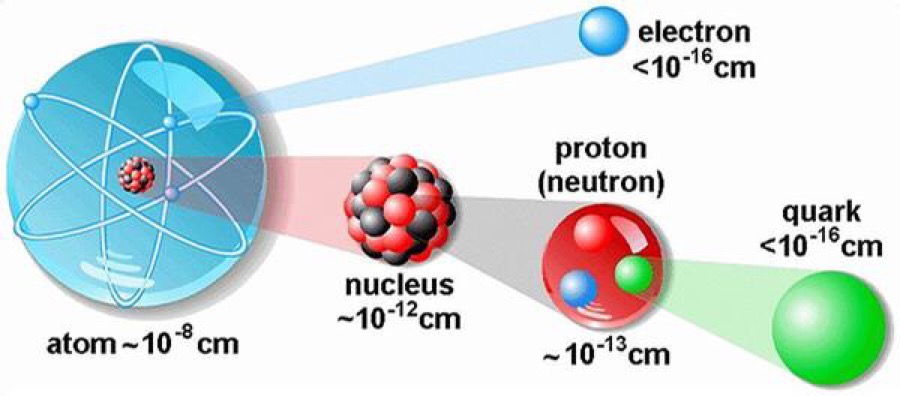
Quarks
As far as we know for now quarks are the smallest thing in the universe.
Quarks are one of the fundamental particles that make up matter. They are found inside protons and neutrons, which in turn make up the nucleus of atoms.
Additionally, quarks come in six types, known as “flavors”: up, down, charm, strange, top, and bottom.
They are never found alone; they always group together to form larger particles.
Quarks are considered elementary particles, meaning they aren’t made of anything smaller, as far as we know.
Hmm, that’s interesting.
But there’s more to the story. Scientists are always searching for even tinier components.
Some theories suggest there might be even smaller particles or strings that make up quarks. So, while quarks are among the smallest things we know about, the quest to find the absolute smallest piece of the universe continues.
It’s a bit like looking for the smallest piece of a puzzle, and each discovery brings us one step closer to understanding the universe at its most fundamental level.
So let’s see what could be even smaller than quark?
So Is There Anything Smaller than Quarks?

As mentioned, as of now, quarks are considered some of the smallest particles we KNOW.
However, there are a few concepts and theories in physics that suggest the possibility of smaller entities:
- Leptons: Alongside quarks, leptons (such as electrons) are also elementary particles and are equally fundamental in the current model of particle physics.
- Neutrinos: These are another type of lepton that are incredibly light and difficult to detect, but they are still considered elementary particles.
- String Theory: This theoretical framework suggests that all particles, including quarks, might be made up of tiny, vibrating strings. If string theory is correct, these strings would be even smaller than quarks.
- Preons: Another theoretical concept is that quarks and leptons might themselves be composed of even smaller particles called preons. This idea hasn’t been proven, but it’s an area of ongoing research.
So the question remains:
How Do Scientists Observe the Smallest Particles?

Particle Accelerators
Particle accelerators are one of the most powerful tools scientists have to observe the smallest things in the universe.
By accelerating particles to incredibly high speeds and smashing them into one another, researchers can observe the subatomic particles that make up matter.
One of the largest particle accelerators in the world is the Large Hadron Collider (LHC), located at CERN in Switzerland.
The LHC has allowed scientists to observe particles like the Higgs boson, which gives other particles mass and has helped to confirm the existence of dark matter.
Interesting fact: The LHC is 27 kilometers in perimeter and contains over 10,000 magnets to guide the particles around the accelerator.
Conclusion
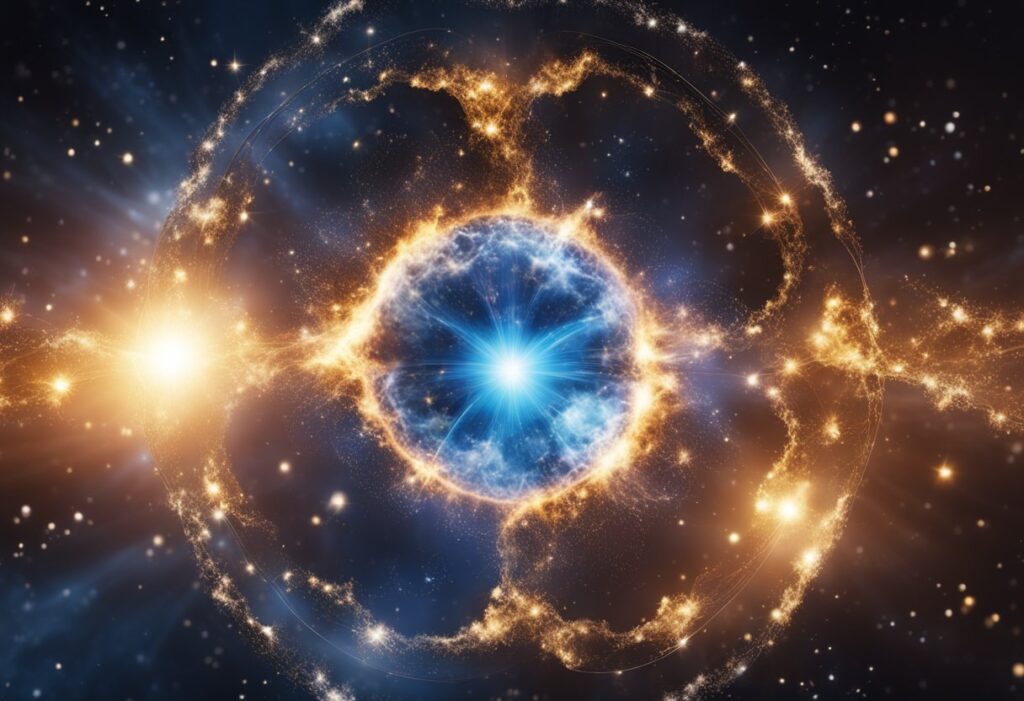
So there you have it. A relatively simple, yet also complicated answer – quarks are currently considered some of the smallest things in the universe.
However, this is based on our current knowledge and understanding of the cosmos.
It’s likely that we will discover smaller particles in the future. And perhaps in the next 100 years, we’ll find yet another even smaller particle, and then another.
The same analogy can be applied to the universe.
We often hear the saying, “The Universe is Infinite.” In a similar way, smaller things could always consist of even smaller things, making the world of microparticles potentially infinite as well.
It’s an interesting thought exercise.
If we can go infinitely in large sizes, why couldn’t we go infinitely in small sizes?
Frequently Asked Questions

What particles are smaller than atoms in the universe?
There are several particles that are smaller than atoms in the universe. These particles are known as subatomic particles and include protons, neutrons, and electrons. They are the basic building blocks of atoms and are essential for the existence of matter.
How do quarks compare in size to other elements of the universe?
Quarks are some of the smallest particles in the universe and are considered to be the building blocks of protons and neutrons. They are much smaller than atoms and are difficult to observe directly.
What is known about the smallest measurable sizes in the cosmos?
The smallest measurable sizes in the cosmos are currently believed to be the Planck length, which is approximately 1.616 x 10^-35 meters. This is considered to be the smallest unit of length that has any physical meaning.
The Planck length is so small that it is difficult to comprehend. If an atom were the size of the entire observable universe, the Planck length would be approximately the size of a single grain of sand.
What is the tiniest entity that the human eye can perceive?
The tiniest entity that the human eye can perceive is approximately 0.1 millimeters in size. This is roughly the size of a grain of sand and is much larger than the smallest particles in the universe.
Is matter infinitely small?
It is currently believed that matter is not infinitely small. By our current understanding, there is a limit to how small particles can be, and this limit is determined by the laws of physics. However, laws of physics can potentially change based on our newest findings.



























